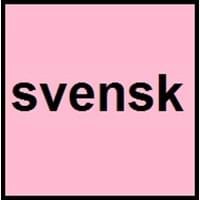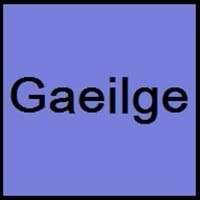Swedish and Irish
Countries
European Union, Finland, Nordic Council, Sweden
European Union, Ireland
National Language
Sweden
Ireland
Second Language
Finland
Ireland
Speaking Continents
Antartica, Europe
Europe
Minority Language
Australia, Belgium, Canada, France, Germany, Netherlands, Spain, Switzerland, United Kingdom, United States of America
United Kingdom
Regulated By
Institute for the Languages of Finland, Swedish Academy, Swedish Language Council
Foras na Gaeilge
Interesting Facts
- In Swedish language, article comes after noun.
- Most of the words in Swedish language began "S" than any other letter.
- In Irish language, there are no exact words for "yes" or "no".
- There are different set of numbers for counting humans and another set for counting non-humans in Irish Language.
Similar To
Norwegian and Danish Language
Not Available
Derived From
Old Norse Language
Not Available
Alphabets in
Swedish-Aphabets.jpg#200
Irish-Alphabets.jpg#200
Writing Direction
Left-To-Right, Horizontal
Left-To-Right, Horizontal
Thank You
tacka dig
Go raibh maith agat
How Are You?
hur mår du
Conas atá tú ?
Good Night
godnatt
Oíche mhaith
Good Evening
god kväll
Tráthnóna maith duit
Good Afternoon
god eftermiddag
Tráthnóna maith duit
Good Morning
god morgon
Dia dhuit ar maidin
Please
vänligen
le do thoil
I Love You
jag älskar dig
Is breá liom thú
Excuse Me
ursäkta mig
Gabh mo leithscéal
Dialect 1
Dialects
Connacht Irish
Where They Speak
Gabon
Connacht
How Many People Speak
Not Available
Dialect 2
Dialects
Munster Irish
Where They Speak
Georgia
Munster
How Many People Speak
Not Available
Dialect 3
Dialects
Ulster Irish
Where They Speak
France
Ulster
How Many People Speak
Not Available
Speaking Population
Not Available
Native Name
Svenska
Gaeilge (na hÉireann) / An Ghaeilge
Alternative Names
Ruotsi, Svenska
Erse, Gaeilge, Gaelic Irish
French Name
suédois
irlandais moyen
German Name
Schwedisch
Mittelirisch
Pronunciation
[ˈsvɛ̂nskâ]
[ˈɡeːlʲɟə]
Ethnicity
Swedes, Finland Swedes
Irish people
Origin
13th Century
c. 750
Language Family
Indo-European Family
Indo-European Family
Branch
Northern (Scandinavian)
Goidelic
Early Forms
Old Swedish
Primitive Irish, Old Irish, Middle Irish, Classical Irish, Irish
Standard Forms
Standard Swedish
An Caighdeán Oifigiúil
Language Position
Not Available
Signed Forms
Tecknad svenska, ("Signed Swedish")
Irish Sign Language
Scope
Individual
Individual
ISO 639 6
Not Available
Not Available
Glottocode
swed1254
iris1253
Linguasphere
52-AAA-ck to -cw
50-AAA
Language Type
Living
Living
Language Linguistic Typology
Subject-Verb-Object
Verb-Subject-Object
Language Morphological Typology
Not Available
Fusional
All Swedish and Irish Dialects
Most languages have dialects where each dialect differ from other dialect with respect to grammar and vocabulary. Here you will get to know all Swedish and Irish dialects. Various dialects of Swedish and Irish language differ in their pronunciations and words. Dialects of Swedish are spoken in different Swedish Speaking Countries whereas Irish Dialects are spoken in different Irish speaking countries. Also the number of people speaking Swedish vs Irish Dialects varies from few thousands to many millions. Some of the Swedish dialects include: Dialects, Dialects. Irish dialects include: Connacht Irish , Munster Irish. Also learn about dialects in South American Languages and North American Languages.
Swedish and Irish Speaking population
Swedish and Irish speaking population is one of the factors based on which Swedish and Irish languages can be compared. The total count of Swedish and Irish Speaking population in percentage is also given. The percentage of people speaking Swedish language is 0.13 % whereas the percentage of people speaking Irish language is Not Available. When we compare the speaking population of any two languages we get to know which of two languages is more popular. Find more details about how many people speak Swedish and Irish on Swedish vs Irish where you will get native speakers, speaking population in percentage and native names.
Swedish and Irish Language Codes
Swedish and Irish language codes are used in those applications where using language names are tedious. Swedish and Irish Language Codes include all the international language codes, glottocodes and linguasphere.





